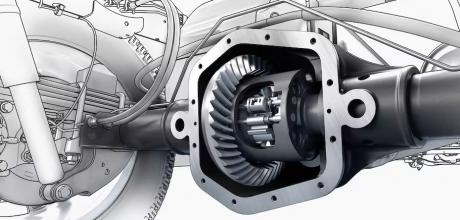What is a differential, and why does a Porsche 911 use them?

We’ve all heard the terms ‘Diff’ and ‘LSD’, or may even recognise the option code 220 for a limited slip diff, but what is a differential and how does one work? We start by understanding why drivetrains use them. Drive a 911 around a radius, and the outer wheels will travel further than the inner wheels. A diff is a geared device in an axle – front, rear but sometimes between axles, too – that permits the opposing output shafts to rotate at different speeds relative to each other. Without a diff, as our 911 drives around our imaginary corner, the unloaded inner wheel would scrub and spin, as it rotates at the same speed of the outer wheel, which is travelling further.
A diff prevents this, and works by having a gear at the end of each driveshaft, bridged by another gear, called the pinion gear. This is an open differential, housed in an assembly that rotates via a ring gear on the outside, in turn driven by the gearbox output shaft, or a propshaft in four-wheel drive variants, if at the front of the car. The ring gear rotates the diff, and the driveshafts rotate. The pinion gears do the work of permitting each driveshaft to turn at different speeds. Turn tightly, and the diff enables the outer wheel to turn faster, reducing tyre scrub.
It’s important to understand a key characteristic of an open diff. While it permits each output shaft to rotate at differing speeds in steady-state driving, break traction and everything changes. Torque is distributed equally, but power takes the least line of resistance. With one wheel on grass and the other on road, drive goes to the side with the least grip. The wheel on grass would spin, while the road wheel with its greater traction remains static. This is why we call it an open differential, because the gears are open to distribute 100 per cent of the drive to one side, depending on load.
Apart from a loss of traction, this characteristic can result in unpredictable handling, which is why Ferdinand Porsche commissioned ZF to create a limited slip diff in 1935. A limited slip diff prevents the issue of drive going to one side only. It ensures that drive is sent to both output shafts equally as it locks up, meaning traction is maximised and handling is more predictable both up to and beyond the limits of mechanical grip on the road.

